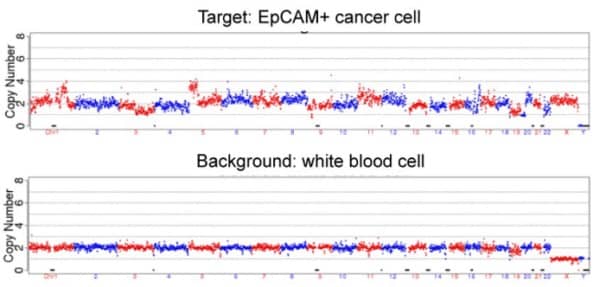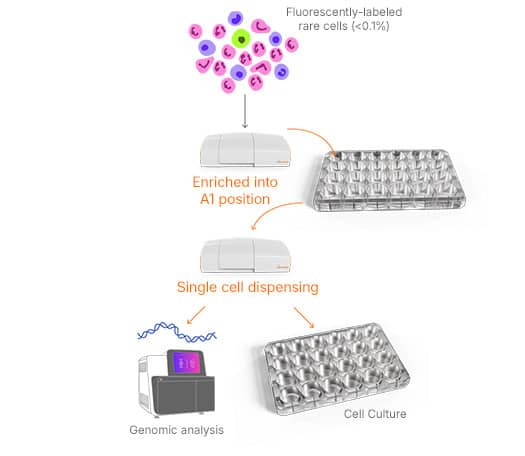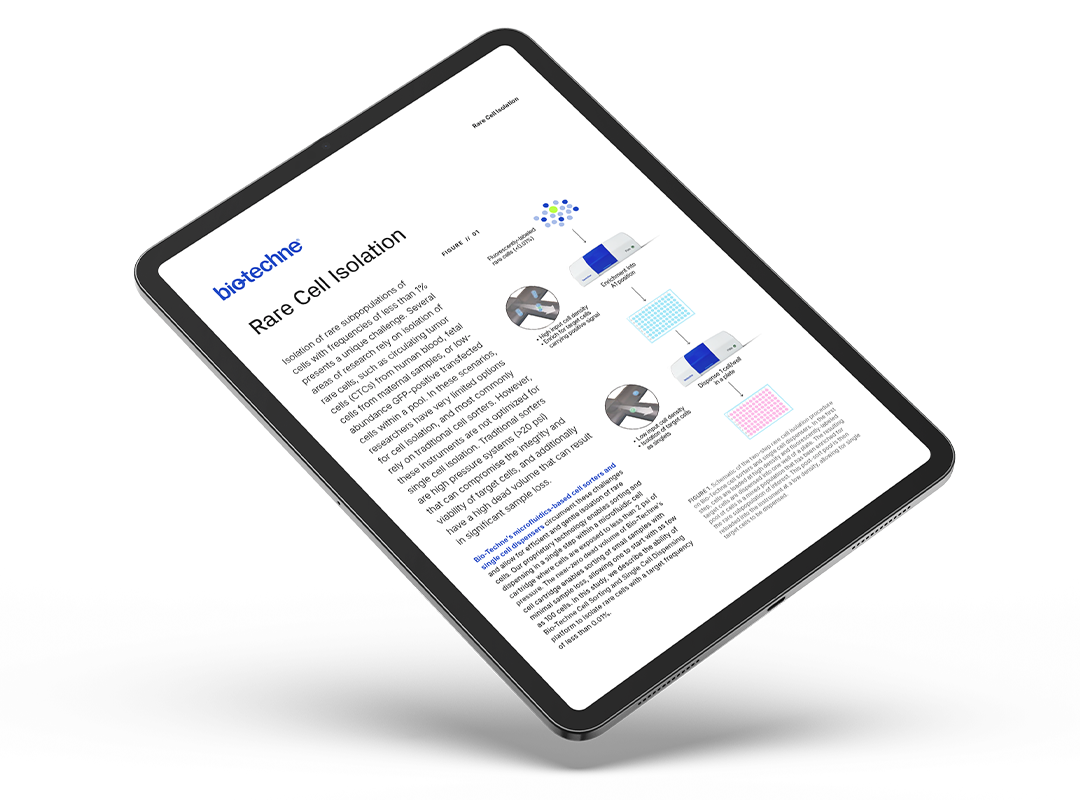Rare Cell Isolation
Rare Cell Enrichment with Bio-Techne's Cell Sorting and Single Cell Dispensing Technology
Rare cells are typically defined as cells that exist at very low concentrations (<0.1%) in a large background population. Circulating Tumor Cells (CTCs) and Circulating Fetal Cells (CFCs) in blood samples are two rare cell types that hold great therapeutic potential. Isolating rare cells has traditionally relied on enrichment methods such as filtration and magnetic bead selection, however, these techniques lack specificity and often yield mixed results.
Bio-Techne's cell sorting technology enables for gentle, rare cell enrichment utilizing fluorescence.
Utilizing the "enrichment" workflow paired with single cell dispensing will allow for the isolation of rare cells for downstream analysis or use.
A typical workflow would start with labeling rare target cells with fluorescence tags followed by loading the high-density samples into a single cell or bulk cartridge. Cells with the specific fluorescence profile are gated and a fluorescence "trigger" is set to ignore cells below the threshold. When a cell with
Gentle
Gentle sorting (<2 psi) preserves cell viability; higher clonality; better outgrowth
Easy
Quick start up in under 5 minutes with no calibration and minimal maintenance
Fast
Quickly isolate rare antigen-specific B cells; process up to 1M cells in 5 min
Sterile
Fits in a standard tissue culture hood; sterile and disposable cell cartridges eliminate sample to sample carryover
Efficient
Dispensing efficiency of 80-90% for CHO cells compared to ~30% with manual pipetting (percentage of dispensed wells with single cells - see figure right)

Isolating Rare Cells with the Bio-Techne Cell Sorter
The Bio-Techne cell sorting technology was used to isolate EpCAM+ cancer cells spiked into a population of white blood cells at a frequency of 0.01%.
CNV (copy number variation) across the genome were profiled and the results confirmed a cancer-characteristic CNV profile from the isolated EpCAM+ cells (top panel), as compared with the background cell population (bottom panel).
Internal controls were carried out: the spiked-in cancer cells were female, carrying the XX genes, while the background cell population were male (XY genes). CNV analysis of the X and Y chromosomes supported that successful isolation of the EpCAM+ cancer cells had occurred.










